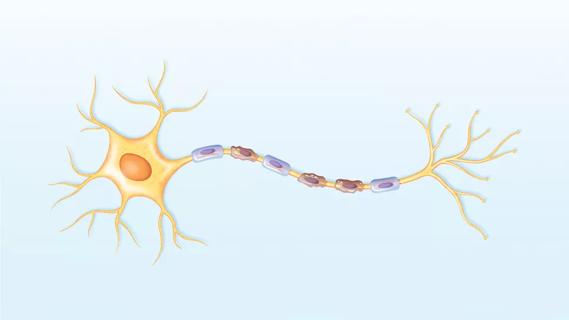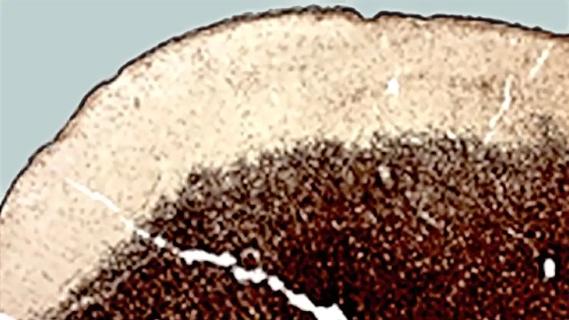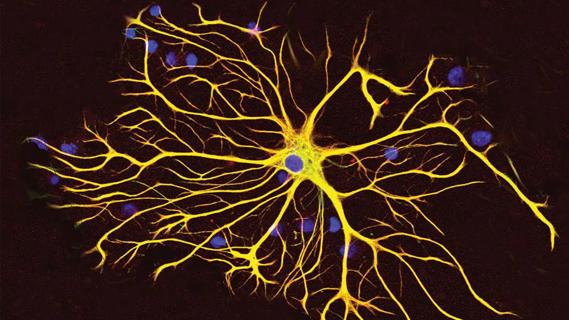Modest research progress to date can still be turned into meaningful patient gains
“This is a hard disease. We want to have hope, but we need to have reasonable hope.” That’s how amyotrophic lateral sclerosis (ALS) is characterized by Rebecca Kuenzler, MD, a neurologist and researcher who specializes in the progressive neurodegenerative disorder in Cleveland Clinic’s Neuromuscular Center.
Advertisement
Cleveland Clinic is a non-profit academic medical center. Advertising on our site helps support our mission. We do not endorse non-Cleveland Clinic products or services. Policy
“So we continue to support patients with the options we currently have available,” she continues, “and with the team we have to answer their needs as much as possible.”
Dr. Kuenzler outlines the challenges of ALS, current progress made against the disease and ongoing efforts to address the many hurdles that remain in the latest episode of Cleveland Clinic’s Neuro Pathways podcast. She discusses the following topics, among others:
Nuances of the workup for suspected ALS and the respective roles of different diagnostic criteria
The utility of a broad multidisciplinary team for ALS management
Click the podcast player above to listen to the 31-minute episode now, or read on for an edited excerpt. Check out more Neuro Pathways episodes at clevelandclinic.org/neuropodcast or wherever you get your podcasts.
This activity has been approved for AMA PRA Category 1 Credit™ and ANCC contact hours. After listening to the podcast, you can claim your credit here.
Podcast host Glen Stevens, DO, PhD: Are there variants of ALS where patients can have a very benign course, or does everybody pretty much follow the same script?
Rebecca Kuenzler, MD: Most people follow the script, which typically involves survival of about three to five years. As with anything, there’s going to be variability, so we certainly have patients who progress more rapidly — a matter of eight months to a year. There are specific genetic mutations that can be behind that, but even people without a known genetic mutation can progress more rapidly for reasons we don't entirely understand. Then we have other patients who, for reasons we again don't understand, will completely defy the curve and be coming back to our ALS team for 10 or 15 years. We don't really know why that happens.
Advertisement
At one point, one of my colleagues tried to look back at a group of patients who fit that mold who were coming back after 10-plus years after a diagnosis of ALS, trying to figure out whether there was anything that was different about this group of patients who had a longer survival. We weren't really able to pull anything specific out of that analysis.
We do know that patients who have bulbar symptoms — that is, speech and swallowing problems — very early in their disease and people who have a lot of respiratory problems will tend to have a shorter life expectancy, on average, compared with people who start with weakness in the arms or legs. Other than that, there are not a lot of things that tend to really change the trajectory of someone’s disease. Being a little older will make a patient’s disease course a little shorter, on average. There also are certain toxins that folks have been exposed to that seem to be a problem, and there is ongoing research in that regard, but there are not a lot of factors that we currently can do much about.
Advertisement
Advertisement

PCPs reveal low levels of confidence in assessing for amyotrophic lateral sclerosis

Novel insights from a postmortem study combining imaging, pathology and clinical perspectives

A principal investigator of the landmark longitudinal study shares interesting observations to date

MRI classifier identifies a subset of patients with disease marked by cortical atrophy, not demyelination

Heightened awareness of this rare disorder may lead to better diagnosis and treatment progress

Early experience with the agents confirms findings from clinical trials

Findings challenge dogma that microglia are exclusively destructive regardless of location in brain

GFAP elevation may signal increased risk of progressive regional atrophy, cognitive decline